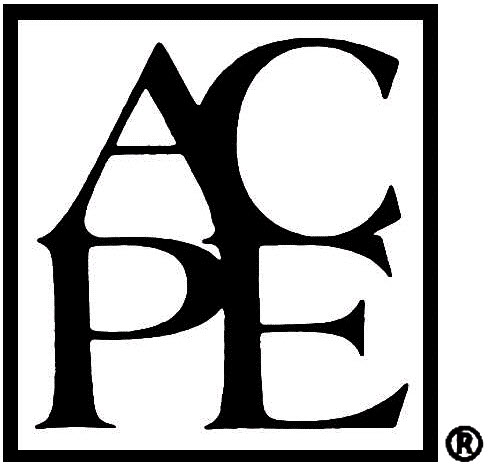Beyond-Use Date Basics for Nonsterile Compounding
Compounding CE for Pharmacists
Are you a Pharmacy Tech? Check out the Pharmacy Tech version of this course.
Course Summary
Preparing safe, effective, and quality compounded nonsterile preparations requires many essential steps, one of which is assigning an appropriate beyond-use date. This requirement lets patients know when their medication can no longer be safely used. Using their knowledge of stability and United States Pharmacopeia standards, pharmacists can assign beyond-use dates to compounded nonsterile preparations that will ensure product integrity and safety throughout the usage and storage period. This course will assist pharmacy personnel in understanding parameters to consider when determining beyond-use dates for compounded nonsterile preparations and will provide recommendations for assigning appropriate beyond-use dates for these types of preparations. United States Pharmacopeia, General Chapter 795, will be reviewed in this context.
Describe factors that can affect the stability of compounded nonsterile preparations
Explain water activity and its importance in determining beyond-use dates for compounded nonsterile preparations
Assign appropriate beyond-use dates to compounded nonsterile preparations
Recall considerations for extending beyond-use dates for compounded nonsterile preparations
Course Syllabus
I. Introduction
II. Compounded Sterile Preparations Categories
III. Beyond-use Date Basics
IV. The Importance of Beyond-Use Dates
Regulatory Oversight
V. Factors Impacting Beyond-Use Dates
1. Stability Considerations
2. Temperature
3. pH
4. Light
5. Oxygen
6. Moisture
7. Particle Size
8. Formulation Changes
9. Container Closure Systems
10. Signs of Instability
VI. Assigning Beyond-use Dates to CNSPs
1. Water Activity
2. New Guidelines
3. CNSPs that Require Shorter BUD
4. CNSPs with Extended BUDs
VII. Beyond-use Date Labeling and Documentation
1. Labeling
2. Documentation
VIII. CNSP Beyond-use Dates: Dos and Don'ts
1. Do
2. Don'ts
IX. Beyond-Use Dating Resources
X. Summary
- Read the course objectives and faculty planner disclosure
- Read the course material
- Complete the post-test with a minimum score of 70% and complete the course evaluation form.
- Results are automatically submitted to CPE Monitor
Faculty Planner Disclosure
The following individuals were involved in the development of this activity: Liz Fredrickson, PharmD, BCPS, and Susan DePasquale, MSN, PMHNP-BC. There are no financial relationships relevant to this activity to report or disclose by any of the individuals involved in the development of this activity.
Unlabeled Use Disclosures
The information provided in this course is general in nature and it is solely designed to provide participants with continuing education credit(s). This course and materials are not meant to substitute for the independent, professional judgment of any participant regarding that participant’s professional practice, including but not limited to patient assessment, diagnosis, treatment and/or health management. Medical and pharmacy practices, rules, and laws vary from state to state, and this course does not cover the laws of each state; therefore, participants must consult the laws of their state as they relate to their professional practice. Healthcare professionals, including pharmacists and pharmacy technicians, must consult with their employer, healthcare facility, hospital, or other organization, for guidelines, protocols, and procedures they are to follow. The information provided in this course does not replace those guidelines, protocols, and procedures but is for academic purposes only, and this course’s limited purpose is for the completion of continuing education credits. Participants are advised and acknowledge that information related to medications, their administration, dosing, contraindications, adverse reactions, interactions, warnings, precautions, or accepted uses are constantly changing, and any person taking this course understands that such person must make an independent review of medication information prior to any patient assessment, diagnosis, treatment and/or health management. Any discussion of off-label use of any medication, device, or procedure is informational only and such uses are not endorsed hereby. Nothing contained in this course represents the opinions, views, judgments, or conclusions of RxCe.com LLC. RxCe.com LLC is not liable or responsible to any person for any inaccuracy, error, or omission with respect to this course, or course material.
Computer Hardware/Software Requirements
Please ensure the device you plan to use meets these requirements and specifications:
- Operating System: Windows 7,8,10, or 11 /Mac OS X 10.9 or later/iOS/Android
- Supported Browsers: Microsoft Edge, Firefox, Google Chrome, Safari, Opera
- A connection to the internet
- For Live Webinars or Conferences: GoToWebinar application for iOS, Android, Mac, or PC. You cannot 'call into' a live conference.
Rating: 4.95/5
Based on the ratings of 580 customers
- Target Audience: Pharmacist
- Secondary Audiences: This educational activity is also for other healthcare professionals, such as nurses, physicians, or others who may be part of a healthcare team and may be interested in this educational topic. A healthcare team approach to patient care may be discussed in this activity, as applicable. No state board or professional organization has evaluated this activity to determine whether it meets the continuing education requirements of nurses, physicians, or other professions not listed under the “Target Audience” described above. Always verify with individual employers or supervisors whether they will accept this educational activity upon completion.
- Contact Hours: 1.0 (0.1 CEUs)
- Activity Release Date: 12/21/2022}
- Activity Expiration Date: 12/21/2025}
- Activity Type: Knowledge
- UAN: 0669-0000-22-106-H07-P
- Topic: Compounding
- CeBroker Number: 20-978440
Faculty:

RxCe.com, LLC is accredited by the Accreditation Council for Pharmacy Education as a provider of continuing pharmacy education.